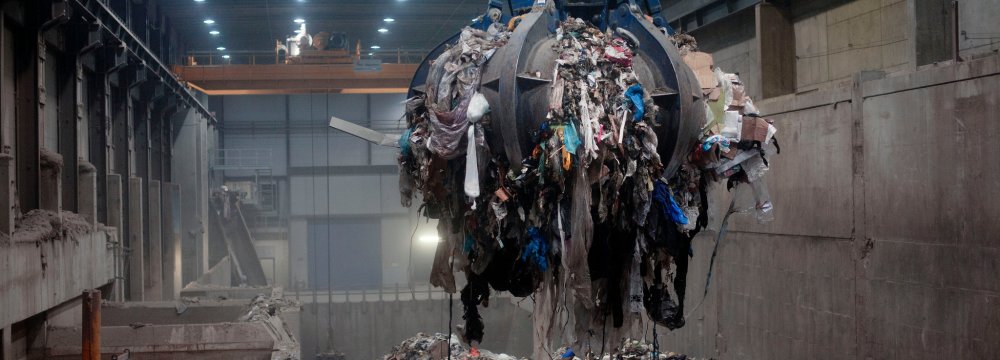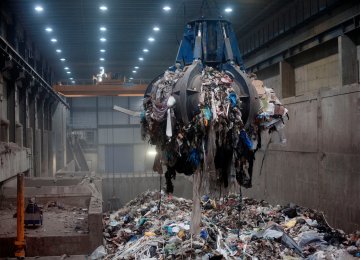Tehran's waste-to-energy (WTE) plants can generate 5 megawatts of electricity daily, the head of Tehran's Department of Environment said.
"Tehran produces between 7,000 and 8,000 tons of garbage daily, a large part of which is used to produce power in Kahrizak and Abali waste processing and disposal complexes," Mohammad Hossein Bazgir was also quoted as saying by ISNA on Wednesday.
Pointing to Kahrizak WTE plant, Bazgir noted that nearly 200 tons of solid waste on a daily basis end up in the Aradkouh Waste Processing and Disposal Complex located in south Tehran near Kahrizak town on the old Tehran-Qom road.
“Part of the waste is incinerated for electricity production and a portion is used for compost production. Some of it is buried unprocessed at the Kahrizak landfill that has been in use for over 45 years and so far has received over 35 million tons of waste,” he said.
According to Bazgir, Aradkouh incineration plant was constructed in 2015 and is capable of generating 2 MW of power per day.
Incineration is a waste treatment process that converts waste into ash, flue gas and heat. Incinerators can reduce the solid mass of the original waste by 80 to 85%.
“We are in need of more incineration plants to help manage waste and prevent their accumulation in landfills,” he added.
Pointing to the advantages of incineration plants, also known as WTE plants, he said that by burning the garbage, contamination of water and soil through leachate—generated from decomposition of garbage—will be avoided.
The official noted that an incineration plant with a capacity of 1 MW can reduce carbon dioxide emission by 50,000 tons per year, whereas a wind plant with the same capacity is capable to reduce carbon dioxide emission by 5,000 tons at the most.
Asked about a newly-inaugurated WTE plant in Abali located in northeastern Tehran, Bazgir said that unlike Kahrizak, wastes are not incinerated at the new site. Instead, they undergo a process called "Anaerobic Digestion" in which wastes are converted to biogases like methane and carbon dioxide, and then the gas is used to produce power.
"Close to 300 tons of waste are delivered to Abali WTE plant every day," he said, adding that 3 MW of electricity can be produced in this plant daily, provided it works in full capacity.
Major Steps
Iran is taking major steps to expand the WTE facilities in collaboration with international companies.
The Renewable Energy Organization of Iran, known as SUNA, signed a build-operate-transfer contract with an unnamed Czech firm in March to construct a 20-megawatt WTE plant in the northern Gilan Province.
Reportedly, the plant will be capable of incinerating 350 tons of municipal waste and converting it into 20 MW of electricity per day.
According to data by state-owned Renewable Energy and Energy Efficiency Organization, two WTE plants are currently operational in Shiraz and Mashhad, albeit with trivial electricity output. Iran has the capacity to generate more than 10,000 MW of electricity from biomass (fuel developed from organic materials), with 25 cities capable of generating at least 400 MW of electricity from waste material, according to the renewable energy organization. Close to 20 million tons of waste are produced annually in Iran.











Add new comment
Read our comment policy before posting your viewpoints